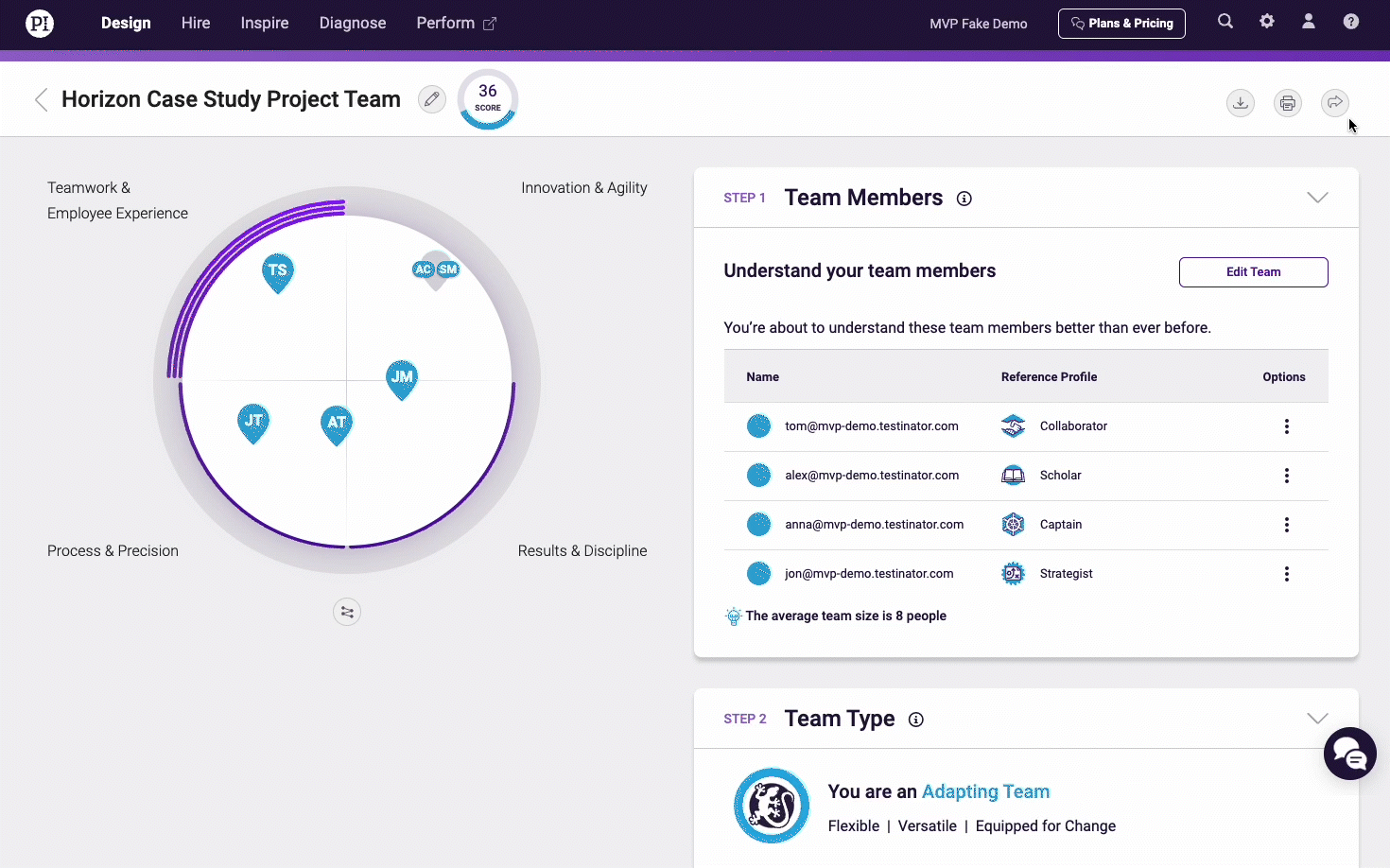Psychological safety is more than just a feel-good term to stimulate employee engagement. It’s a critical component of high-performing teams.
A two-year study by Google, Project Aristotle, discovered five components found in high-performing teams:
- Psychological safety
- Dependability
- Structure and clarity
- Meaning of work
- Impact of work
Of the five, psychological safety was deemed not only the most important but also the foundation for the other components.
Join 10,000 companies solving the most complex people problems with PI.
Hire the right people, inspire their best work, design dream teams, and sustain engagement for the long haul.
What is psychological safety?
Harvard Business School Professor Amy Edmondson described psychological safety as “a belief that one will not be punished or humiliated for speaking up with ideas, questions, concerns, or mistakes.”
The Google study cited above described psychological safety as feeling safe to be vulnerable or take risks in front of teammates.
At its core, psychological safety is when team members feel safe taking interpersonal risks.

9 signs your organization has low psychological safety:
Here are some signs and symptoms that your employees don’t feel psychologically safe:
- Employees don’t ask many questions during meetings.
- Employees don’t feel comfortable owning up to mistakes or place blame on others when mistakes are made.
- The team avoids difficult conversations and hot-button topics.
- Executives and team leaders tend to dominate meeting discussions.
- Feedback is not frequently given or requested.
- Employees don’t often venture outside of their job descriptions to support other teammates.
- Employees don’t ask one another for help when they need it.
- There are hardly any disagreements or differing points of view.
- Employees don’t know one another personally, just professionally.
How do you measure psychological safety?
When taking a talent optimization approach to boost employee engagement, it’s important to diagnose your people problems. This means collecting objective people data that can provide valuable insight into what’s working and not working when it comes to your employees.
When you see warning signs of low psychological safety, dig deeper to discover what’s really going on.
To do this, conduct a simple survey using a tool like SurveyMonkey. On your survey, ask employees to rate the following seven statements on a scale of 1-5 (1 being strongly disagree, 2 being disagree, 3 being neutral, 4 being agree, and 5 being strongly agree).
- People at this organization are able to bring up problems and tough issues.
- I feel safe to take a risk in this organization.
- It is difficult to ask other members of this organization for help.
- No one at this organization would deliberately act in a way that undermines my efforts.
- Working with members of this organization, my unique skills and talents are valued and utilized.
- If I make a mistake at this organization, it is often held against me.
- People at this organization sometimes reject others for being different.
A positive response to the first five statements, along with a negative response to the final two statements, indicates strong psychological safety.
You might first conduct the survey with a focus on the organization as a whole, then follow up with an additional survey that’s team-specific. Just be sure to update the questions to reflect a team focus (e.g., I feel safe to take a risk on this team).
The organization-wide results will provide insight into cultural issues that may impact psychological safety.
Compare team-specific results to the organizational benchmark to see if certain managers are better or worse at creating psychologically safe teams.
Join 10,000 companies solving the most complex people problems with PI.
Hire the right people, inspire their best work, design dream teams, and sustain engagement for the long haul.
How to create psychological safety at work
As the 2024 People Leader Report found, great managers take a holistic approach to creating psych safety on their team—it’s not about addressing one of these issues, but rather all of them simultaneously.
Once you have an understanding of which aspects of your organization or team are contributing to low levels of psychological safety, you can create a plan of action to address them.








